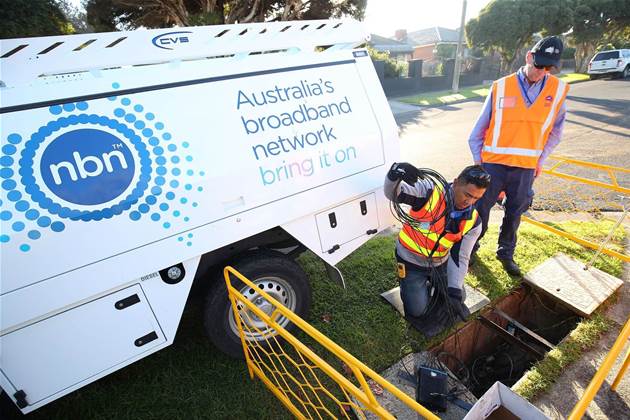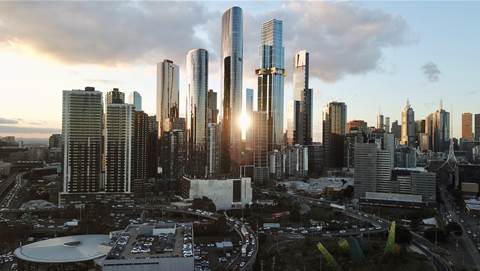NBN Co may seek changes to regulatory rules affecting its operations on the basis - or belief - that it can no longer be considered as “a monopoly provider of broadband services” in many market segments.

The network operator flagged in a discussion paper earlier this week that it is undecided on whether to pursue core changes to the special access undertaking (SAU) that sets price and non-price terms for NBN Co’s operations until 2040.
The company has previously been unsuccessful at amending the terms of the SAU.
However, a revision is now back on the table, primarily to address pricing model issues, and that means NBN Co will submit an amended SAU to the Australian Competition and Consumer Commission (ACCC) before the end of the year.
Unsurprisingly, the conversation this week was dominated by a new flat-price model that NBN Co has proposed incorporating into the amended SAU.
NBN Co will also seek to make further changes to the document, expanding it to cover the multi-technology mix (MTM) - something it has previously failed to do - and removing outdated or superseded terms.
“With the passage of time, several SAU terms have become outdated, and nbn sees this current SAU variation process as providing the opportunity to either refresh or remove such terms,” NBN Co said in a discussion paper.
“We anticipate that these changes should not be contentious.”
Outside of this, however, the discussion paper also flags the possibility of additional changes to the SAU on the basis that NBN Co should no longer be thought of as a monopoly broadband provider in several market segments in which it operates.
“The SAU was developed in a context where the market dynamics facing NBN Co were assumed to reflect NBN Co operating as a monopoly provider of broadband services,” NBN Co said.
“In reality, there are substantial market segments where this is not the case.
“NBN Co faces significant competition in the enterprise, business, and new developments markets from existing infrastructure providers, and also faces increasing competition from 4G, 5G and fixed wireless services in the residential market.
“The fact that almost 1 in 3 households (~4M out of ~12M) is not using the NBN today, illustrates the dynamic nature of the market.”
NBN Co specifically called out the rise of 5G-based ‘fixed wireless’ services by Optus and Telstra - which are increasingly marketed as NBN alternatives to lower-tier users - as an example of its monopoly grip on the home broadband market slipping.
“These market developments raise questions about the ongoing appropriateness of some elements of the current SAU,” NBN Co said.
“For example, in competitive enterprise markets, the relevance of the SAU’s price controls are less obvious, as are the commitments around product development and withdrawal.
“NBN Co has not finalised views on whether it will seek to incorporate changes to the SAU to address such issues, but raises them here to highlight that there is a range of matters in the SAU which could be considered as the 2021 variation is further developed.”
It’s the second time in a matter of months that NBN Co has called attention to the prospect of 5G services eating away at some of its anticipated residential market share.
NBN Co still maintains it will hit its planned take-up numbers regardless of the acknowledged increase in competition, though the goalposts for that target continue to shift
NBN Co has had a long-term target of achieving 73-75 percent take-up, but only in the fixed-line footprint - the two-thirds take-up called out by NBN Co this week as an example of the competitive headwinds it faces covers the entire network.
NBN Co has repeatedly given itself an extra year to hit that 73-75 percent takeup in the fixed-line footprint.
Back in 2017, it said it would hit its 73-75 percent take-up target in 2021. That became “by FY22” in the 2019 corporate plan, “by FY23” in the 2020 corporate plan, and “by FY24” in the most recent - 2021 - corporate plan.
As of its most recent weekly update, it is tracking at 70.6 percent take-up in the fixed-line footprint.
To get to the bottom end of the long-projected range, it will have to win over new sign-ups in a broadband market it now admits is now more competitive than ever.
Despite this, an NBN Co spokesperson told iTnews that “there is no change to our corporate plan takeup target range of 73-75 per cent in fixed-line areas.”
“As stated in our third quarter financial results in May, our key performance metrics are on track to meet FY21 corporate plan forecasts,” the spokesperson said.
A roundtable discussion between NBN Co, the ACCC and retail service providers next week may provide additional clues on the SAU terms that NBN Co may seek to change by relieving itself of monopoly provider status.

















.png&h=141&w=208&c=1&s=1)

